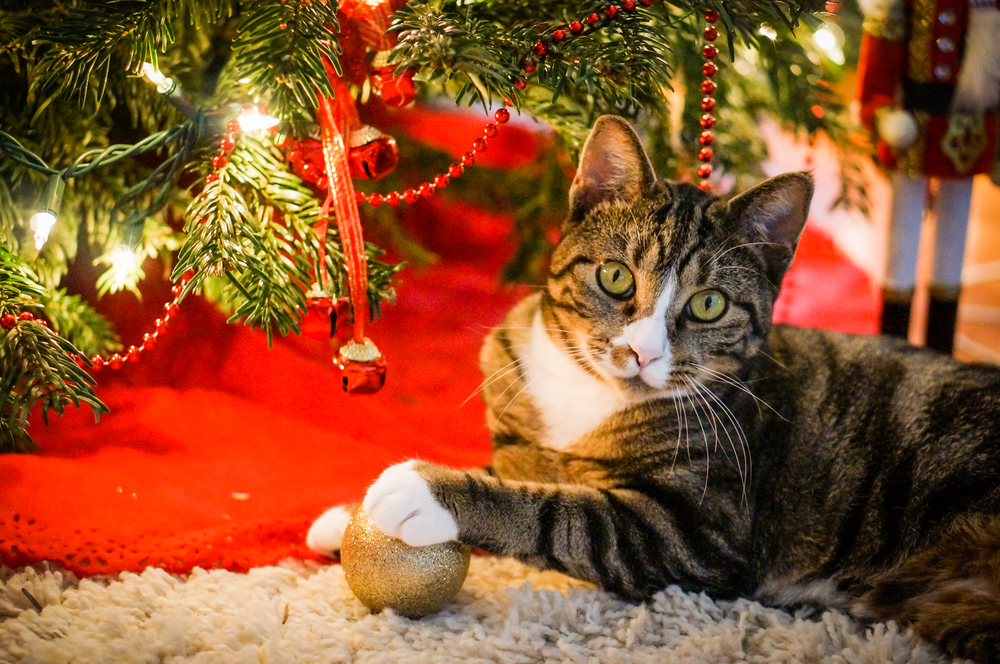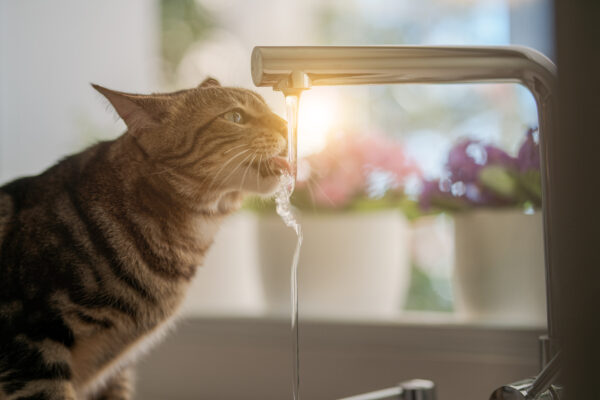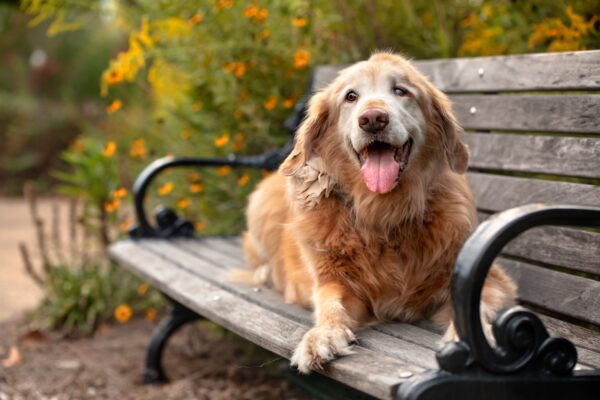Christmas is a magical time, but the realities of having a pet makes it a period that brings a side of stress, from playful cats and baubles to curious dogs and leftovers. Here we’ll run through some of the ways you can avoid any mishaps, and make it a season the whole (fur) family can enjoy.
1. Keep chocolate out of reach
We all know that dogs have magic powers to sniff out food they’re not allowed, particularly at Christmas when chocolate is everywhere, from (human) advent calendars to shiny foil decorations. As delicious as it is, chocolate is highly toxic to cats and dogs because of theobromine, a chemical that’s very poisonous to them. Dark chocolate and cocoa powder, contain a higher concentration of theobromine compared to milk chocolate, meaning even small amounts of these types of chocolate can be very dangerous. If your pet does eat chocolate then symptoms can range from vomiting and abdominal pain to seizures, heart rhythm and rate disturbances and even death, depending on the amount ingested.
If your pet has managed to sniff out some chocolate, consult a vet for medical help immediately. To be safe, you can prevent this by avoiding edible decorations and making sure any food gifts are kept from underneath the tree.
2. Keep wires out of the way
To pets, wires are the ultimate chew toy, particularly if you have a curious furry friend that loves a challenge. Christmas lights might be especially tempting as they’re new and unfamiliar, ideal for playing and biting into.
To ensure no electric shocks are on the cards, tidy away wires with cable ties or tape. As a bonus, they might even save you from tripping over them.
3. Hang glass ornaments up high
For cats, the Christmas tree is the ultimate plaything. From dangling ornaments to shiny lights, what’s not to taunt them? We can’t really blame them for not keeping their paws off. It’s best to proceed with caution and hang any glass baubles high and out of sight, particularly when you first put the tree up and it attracts extra attention.
4. Protect the tree
Some cats can’t resist the tree, and simply must attack. If this is the case with your cat, consider having a small guard or gate at the base of the tree to keep moggies at bay. Other options include putting down an unpleasant texture near the tree, like tin foil, as cats dislike the crinkling texture underfoot. Another option would be repellent smells, but be sure they’re non-toxic so as not to cause unintentional harm. Scents to consider include sharp orange and citrus aromas with an acidic tang.
5. Vacuum regularly
Dangers can lurk everywhere at Christmas, from pine needles and ribbons to floating pieces of tinsel. These small things can end up in your pet’s mouth, and consequently, their tummy. If ingested, they can cause serious damage to the gut with their sharp and spiky shapes. Worst case scenario they can twist the intestine, an unpleasant and painful experience for your pet. To avoid this, regularly check the floor, especially around the tree, for any stray pieces of ribbon or tinsel, and make a habit of hoovering pine needles.
6. Keep candles at a safe distance
No sensible-minded person would nudge a lit candle, but cats and dogs didn’t get the memo, and aren’t always sensible-minded. If your pet is unfamiliar with fire, they’ll likely be interested and drawn to the flickering light, they may even try to bat it with their paws. As you might imagine, when they discover that fire can burn, they might react badly and knock the candle out of position out of surprise. This can end badly if the candle falls on the floor or even gets too close to curtains depending on where it’s sat.
7. Say ‘no’ to mistletoe
Like chocolate, there are quite a few Christmas plants and flowers that contain chemicals that might prove to be poisonous to cats and dogs. Mistletoe is one of them, which can cause vomiting, diarrhoea, excessive drooling and weakness. Be wary if you hang it above your doorway as the leaves and berries that drop off can pose a real risk if your pet decides they look like a tasty snack.
Other flowers to watch out for are holly (and the berries), and the red classic, poinsettias.
8. Give leftovers a miss
When it’s prepared correctly and given in measured quantities, cats and dogs really appreciate a bit of chicken or turkey, just be sure you don’t feed it to them with the bone, as it can be dangerous. As they’re hollow, chicken and turkey bones are prone to splintering if chewed, and this can result in your pet choking, or even suffering from a pierced stomach or intestine.
There are plenty of other foods your pet shouldn’t eat, and these include Christmas cakes, puddings and mince pies. Remember that raisins and sultanas are poisonous to dogs, while brandy in cakes and suet in pastry dishes can prompt stomach issues. Nuts, especially macadamia nuts and grapes can also cause serious issues, as well as alcohol, which is in most foods at Christmas.
9. Watch out for signs of stress
Your pet might be exceptionally well-behaved and know not to go at the tree, but sometimes all of the jovial activities and new houseguests can cause genuine distress. With so many new sounds, smells and colours, it’s no wonder they might get overwhelmed. If they are stressed, they may react by doing uncharacteristic things. Indoor cats might suddenly start dashing for the door, while dogs who don’t bark, might suddenly get vocal. Watching out for these signs of stress can prevent lots of problems and avoid situations from escalating.
Christmas can be full of joy and happiness, and if you watch out for these dangers, you and your pet can make it a (safe) season to remember for years to come.



